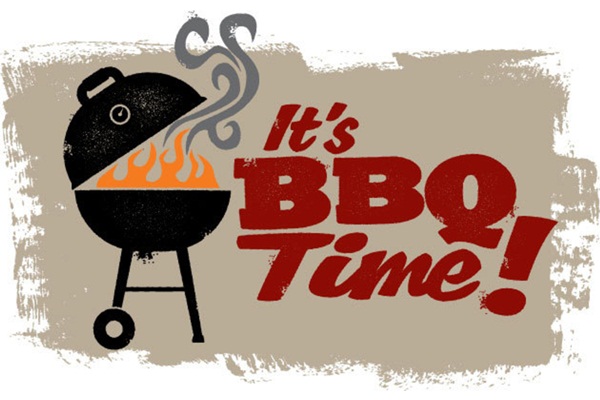An article in last week’s New York Times Doctors Strive to do Less Harm by Inattentive Care described a new development in medical practice that focuses doctors on the alleviation of patient “suffering” – instead of simply following routine procedures. This approach urges doctors to talk directly with their patients about not only their illness, but also how they are feel about their treatment. It encourages hospitals to survey patients about their experiences of treatment and care.
The best example of “old” practice is the middle-of-the-night blood draw. If you have ever spent time in hospital, you were probably woken in the middle of the night to have your vitals checked and blood drawn. Why? In order that the results of your blood test would be available first thing in the morning to the doctor as he or she made their rounds. And, well, because it has always been done that way.
The result? Well, you probably didn’t get a great night’s sleep. How many of us talk about needing to get out of hospital in order to get well again? Maybe that blood test was vital – but maybe not, perhaps it was just routine. And presumably it could also have been done at 9am or 3pm.
So hospitals that actually track patient feedback are beginning to change their practice. Why add to suffering? So no more middle-of-the-night blood draws unless there is a medical requirement. No one seems to be dying as a result. And a lot of people are getting a better night’s sleep.
More fundamentally, there is a move towards framing the doctor’s role as alleviating suffering of all kinds – physical, psychological – and including the suffering caused by treatment.
How do these lessons translate into legal practice?
While the medical and legal systems are very different, the changes and challenges each is facing share some similarities. Both doctors and lawyers are dealing with a new generation of clients who think and feel very differently than their predecessors about the type of professional, expert they want, and their own role in that relationship.
Of course, lawyers in Canada have the added burden of persuading their clients that they are worth what they pay for their services.
Taking the lessons learned here by the medical profession, and translating the same ideas into legal practice, raises some provocative but critical questions for the legal profession:
- How much of what lawyers habitually do for their clients –perhaps assuming it is for their clients’ benefit because it has always been done that way – is a matter of routine? Just to take one example, could we encourage greater reasonableness in drafting pleadings – avoiding the ritual of inflated allegations, unrealistic claims, and minimizing inflammatory pleadings that add fuel to the fire of litigation?
- How much of what lawyers do for their clients is the result of an established belief that they “know best” regarding what is necessary to “protect” their client? For example, could lawyers balance the need to provide sufficient “due diligence” – for both the benefit of the client and the protection of the lawyer – while allowing a client the level of respect and autonomy they deserve (and increasingly demand) to direct the level of service in their matter?
- How can lawyers and clients find complimentary arrangements that meet their clients’ interests as well as lawyers’ own financial needs in paying for (and collecting) expensive litigation? Including alternatives to the billable hour model and the tradition of a significant upfront retainer?
- Just like doctors, is it a part of the lawyer’s role to “alleviate suffering” –including the inevitable suffering caused by participating in a legal process? As a first step, could this suffering be more openly acknowledged in conversations between lawyers and their clients?
- Would it be helpful for lawyers and lawyers’ organizations to ask their clients what they could do better to alleviate their suffering? (for example, by gathering information via client surveys)
Eyes on the prize
As 21st century helping professions adjust to the vastly different expectations of their clients – who can now turn to the Internet for answers, or at least the appearance of answers, where they would previously been wholly dependent on their lawyer (doctor, tax accountant, investment advisor) – how do they demonstrate their unique skills and value?
How do lawyers convince clients who are savvy consumers – who shop daily on-line and negotiate constantly in a vast Internet superstore – that they offer something that is value-for-money – and worth $350 an hour? Something that they cannot get from reading a webpage, or talking to someone who is less qualified?
The reality is that despite its many dedicated, smart and industrious members, the NSRLP hears every day from members of the public whom the legal profession has failed to convince that they have good answers to these questions.
In the old days, clients naturally deferred to their lawyers’ wisdom and expertise – they simply did not ask questions about their value and their worth. This is a new challenge – just as doctors are now challenged by patients to justify their treatment choices. We need good, thought-through, effectively communicated answers to these questions, answers that the whole profession can get behind.
Eyes on the prize for lawyers in 2015 means being clear about what we can do for our clients that other forms of assistance cannot.
Bottom line, how can lawyers alleviate client suffering?
The lawyer/client partnership
The innovations described in the New York Times are hugely popular among patients, boosting both individual doctor’s and hospital department’s ratings to an astonishing degree. Of course, it’s not as simple as eliminating middle-of-the-night blood draws – or having a different conversation with a client about payment options – but it all helps.
For the public to believe that lawyers really want to help them and can help them – and are worth their dollars – the profession must show its commitment to placing client needs ahead of engrained routines, shake down their “lawyer-in-charge” assumptions, and recognize the impact on clients of participation in the (often dysfunctional) legal process. Just as patients increasingly expect their doctors to consider the impact of various treatment options, as well as to make them well again.
For its part, the public needs to understand what it is that their lawyer can – and cannot – do for them. This includes the limits of what their lawyer can do to change the reality of their personal crisis, and how much they can shield them from the negative consequences – the “suffering” – of participation in the justice system.
Working together, a realistic, pragmatic, costs-to-results-effective lawyer/client partnership can elevate and enlarge client choices going forward.
The five questions posed here would be an interesting place to begin this dialogue.
(with thanks to Rob Harvie)












has anyone seen the changes being made to the vexatious litigant legal determination at ablaw. ? perhaps someone could explain this demonization of the self represented. to deny anyone their legal charter rights to access to justice,,is a big deal,, to do it under the circumstances being hearalded by the law society of alberta is now the true attitude of how the legal system deals with the self represented. they do not want to hear us,, and if it takes this complete lack of help for the self represented to acquire the evidence necessary in their cases. in no time,,, you will be packed up and thrown out the courthouse doors. is this the compassion you are talking about? is this an indication of how the justice system is going to “help” the self represented? yes. it is. how is this any kindness or compassion for people who are attempting to be heard, but may not know how to use the legal s”system”. this is how the legal system will be used against you. should you actually have the gall to step forward and ask for the justice system to hear you. ask yourself, is this the way you would like to be heard. this is what is changing in the Canadian legal system. not toward justice and open access for the public. but away from it.
Thank you for this Julie, and for the generous attribution. There is, without question, a change coming to how lawyers relate to their clients – perhaps starting with lawyers learning to talk to (not at) their clients, and considering other delivery options, including Limited Scope Retainers, fixed fee retainers, and other innovative and client centered delivery models.
Consider – there was a time when Digital Equipment Corporation ruled the computer market, selling incredibly expensive, massive mainframes. Someone suggested selling smaller computers that more people could afford, and the response of their President, Ken Olsen, was “the personal computer will fall flat on its face in business”, regarding them as “toys” used for playing video games. After showing sales of over $14 billion in the late 80’s, Digital effectively went out of business within a decade.
Lawyers should be very wary of a business model that has “always worked”.